Blog
The Lagoon Nebula (catalogued as Messier 8 or M8, NGC 6523, Sharpless 25, RCW 146, and Gum 72) is a giant interstellar cloud in the constellationSagittarius. It is classified as an emission nebula and as an H II region.
The Lagoon Nebula was discovered by Giovanni Hodierna before 1654 and is one of only two star-forming nebulae faintly visible to the eye from mid-northern latitudes. Seen with binoculars, it appears as a distinct cloud-like patch with a definite core. Within the nebula is the open cluster NGC 6530.
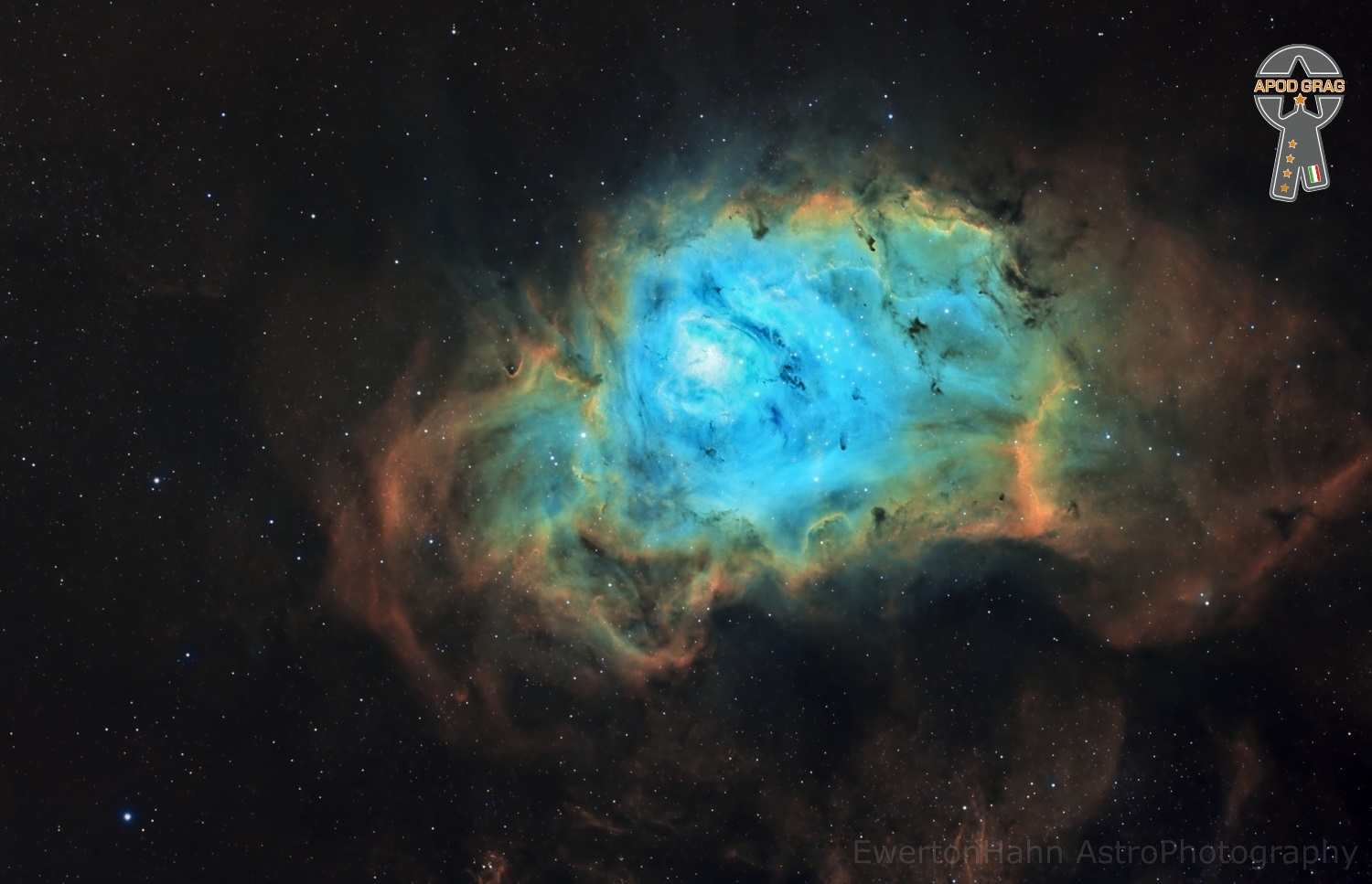
Charles McPherson (born July 24, 1939) is an American jazz alto saxophonist born in Joplin, Missouri, United States, and raised in Detroit, Michigan, who worked intermittently with Charles Mingus from 1960 to 1974, and as a performer leading his own groups.
McPherson also was commissioned to help record ensemble renditions of pieces from Charlie Parker, on the 1988 soundtrack for the film Bird.
more...Billy Taylor (July 24, 1921 – December 28, 2010) was an American jazz pianist, composer, broadcaster and educator. He was the Robert L. Jones Distinguished Professor of Music at East Carolina University in Greenville, and from 1994 was the artistic director for jazz at the John F. Kennedy Center for the Performing Arts in Washington, D.C.
A jazz activist, Taylor sat on the Honorary Founders Board of The Jazz Foundation of America, an organisation he founded in 1989, with Ann Ruckert, Herb Storfer and Phoebe Jacobs, to save the homes and the lives of America’s elderly jazz and blues musicians, later including musicians who survived Hurricane Katrina.
Taylor was a jazz educator, who lectured in colleges, served on panels and travelled worldwide as a jazz ambassador. Critic Leonard Feather once said, “It is almost indisputable that Dr. Billy Taylor is the world’s foremost spokesman for jazz.”
Taylor was born in Greenville, North Carolina, United States, but moved to Washington, D.C., when he was five years old. He grew up in a musical family and learned to play different instruments as a child, including guitar, drums and saxophone. He was most successful at the piano, and had classical piano lessons with Henry Grant, who had educated Duke Ellington a generation earlier. Taylor made his first professional appearance playing keyboard at the age of 13 and was paid one dollar.
more...Jesus Christ Super Star presented by Theatre 55 performing @ Caponi Art Park 7pm weather permitting. Music with Raymond Berg, Jamie Carter, Lyra Olson and mick laBriola. Rain warning today and last show tomorrow at 5pm.
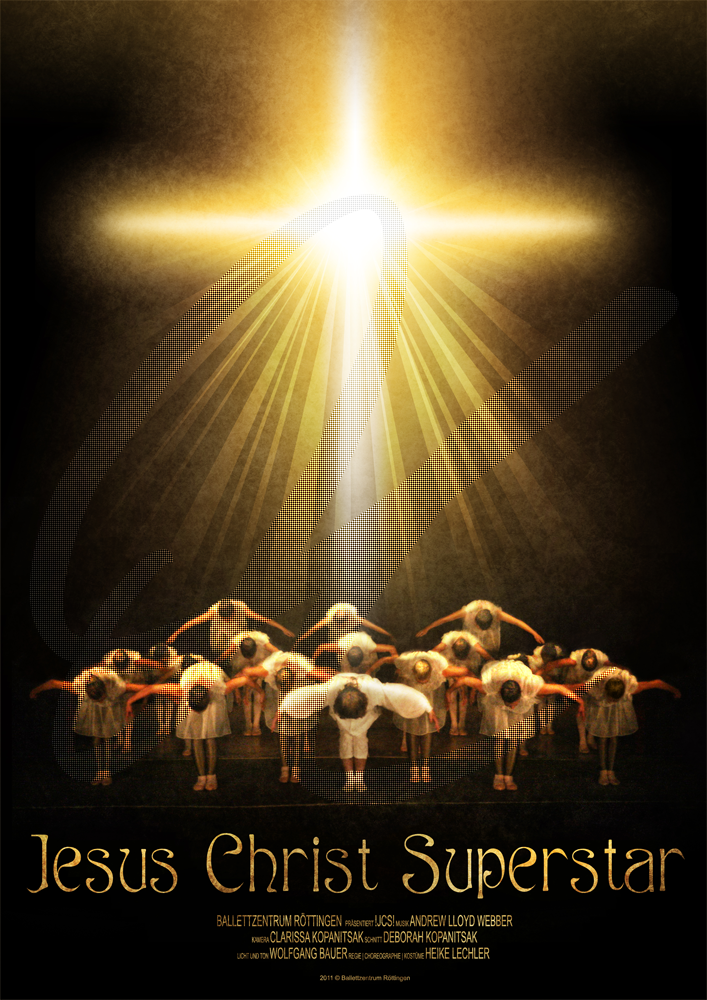
NGC 4921 is a barred spiral galaxy in the Coma Cluster, located in the constellation Coma Berenices. It is about 320 million light-years from Earth. The galaxy has a nucleus with a bar structure that is surrounded by a distinct ring of dust that contains recently formed, hot blue stars. The outer part consists of unusually smooth, poorly distinguished spiral arms.
In 1976, the Canadian astronomer Sidney Van den Bergh categorized this galaxy as “anemic” because of the low rate at which stars are being formed. He noted that it has “an unusually low surface brightness and exhibits remarkably diffuse spiral arms“. Nonetheless, it is the brightest spiral galaxy in the Coma Cluster. This galaxy is located near the center of the cluster and has a high relative velocity (7,560 km/s) compared to the mean cluster velocity. When examined at the 21 cm wavelength Hydrogen line, NGC 4921 was found to be strongly H I deficient, indicating that it is low in hydrogen. The distribution of hydrogen has also been deeply perturbed toward the SE spiral arm and is less extended than the optical disk of the galaxy. This may have been caused by interaction with the intergalactic medium, which is stripping off the gas via ram pressure. Some filaments of gas that have been stripped away are falling back to the galaxy, making NGC 4921 possibly the first observational evidence of this fallback.
On May 4, 1959, a supernova explosion was observed in this galaxy by M. L. Humason using a Schmidt telescope at the Palomar Observatory. It appeared “quite far from the center” of the galaxy, and reached an estimated peak magnitude of 18.5. The light curve proved similar to supernova SN 1987a in the Large Magellanic Cloud, and it displayed “unusual photometric behavior”.
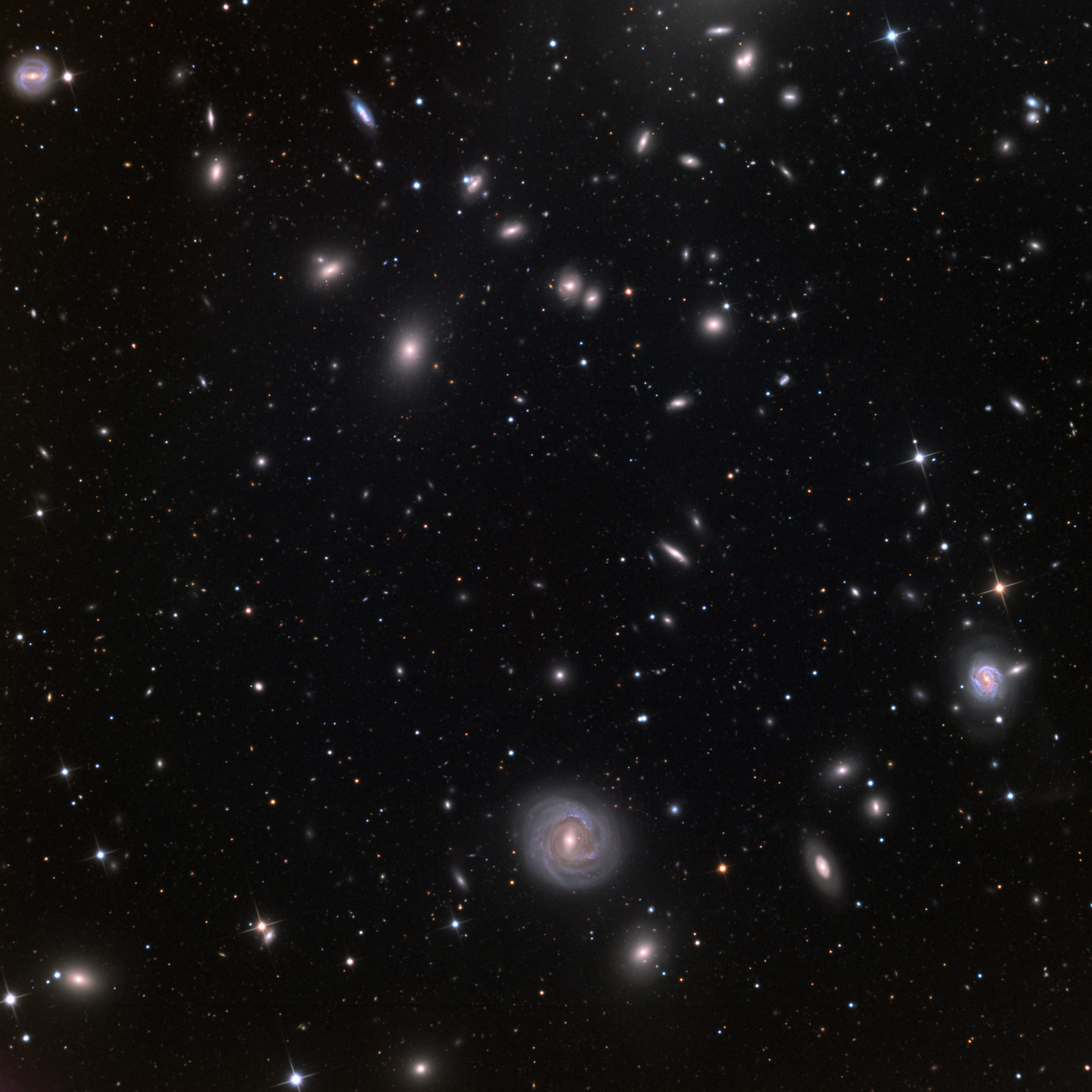
Steve Lacy (born Steven Norman Lackritz; July 23, 1934 – June 4, 2004) was an American jazz saxophonist and composer recognized as one of the important players of soprano saxophone.[1] Coming to prominence in the 1950s as a progressive dixieland musician, Lacy went on to a long and prolific career. He worked extensively in experimental jazz and to a lesser extent in free improvisation, but Lacy’s music was typically melodic and tightly-structured. Lacy also became a highly distinctive composer, with compositions often built out of little more than a single questioning phrase, repeated several times.
The music of Thelonious Monk became a permanent part of Lacy’s repertoire after a stint in the pianist’s band, with Monk’s songs appearing on virtually every Lacy album and concert program; Lacy often partnered with trombonist Roswell Rudd in exploring Monk’s work. Beyond Monk, Lacy performed the work of jazz composers such as Charles Mingus, Duke Ellington and Herbie Nichols; unlike many jazz musicians he rarely played standard popular or show tunes.
Lacy began his career at sixteen playing Dixieland music with much older musicians such as Henry “Red” Allen, Pee Wee Russell, George “Pops” Foster and Zutty Singleton and then with Kansas City jazz players like Buck Clayton, Dicky Wells, and Jimmy Rushing. He then became involved with the avant-garde, performing on Jazz Advance (1956), the debut album of Cecil Taylor, and appearing with Taylor’s groundbreaking quartet at the 1957 Newport Jazz Festival; he also made a notable appearance on an early Gil Evans album. His most enduring relationship, however, was with the music of Thelonious Monk: he recorded the first album to feature only Monk compositions (Reflections, Prestige, 1958) and briefly played in Monk’s band in 1960 and later on Monk’s Big Band and Quartet in Concertalbum (Columbia, 1963).
more...Richie Kamuca (July 23, 1930 – July 22, 1977) was an American jazz tenor saxophonist.
Kamuca was born in Philadelphia, Pennsylvania, United States, and, like many players associated with West Coast jazz, grew up in the East before moving West around the time that bebop changed the prevailing style of jazz. His early playing, in what is generally considered the Lester Young style, was done on tour with the big bands of Stan Kenton and Woody Herman, where he became a member of the later line-ups of Herman’s Four Brothers saxophone section with Al Cohn and Bill Perkins.
Kamuca stayed on the West Coast, playing with the smaller groups of Chet Baker, Maynard Ferguson, Shorty Rogers, and others. He was one of the Lighthouse All-Stars in 1957 and 1958, and recorded with Perkins, Art Pepper, Jimmy Rowles, Cy Touff and many others in those years, as well as leading recording sessions in his own right.
Kamuca was a member of the group Shelly Manne and His Men from 1959 through 1962, when he returned East and settled in New York. Here he worked with Gerry Mulligan, Gary McFarland, and Roy Eldridge, before returning to the West Coast in 1972, where he recorded in the studios and performed with local groups.
Less well known to the general public than saxophonists like Stan Getz, who played in a similar Lester Young-derived style, Kamuca died of cancer, in Los Angeles, California, just before his 47th birthday.
more...William Thomas “Champion Jack” Dupree (July 23, 1909 or July 4, 1910 – January 21, 1992) was an American blues and boogie-woogie pianist and singer. His nickname was derived from his early career as a boxer.
Dupree was a New Orleans blues and boogie-woogie pianist, a barrelhouse “professor”. His father was from the Belgian Congo and his mother was part African American and Cherokee. His birth date has been given as July 4, July 10, and July 23, 1908, 1909, or 1910; the researchers Bob Eagle and Eric LeBlanc give July 4, 1910.
He was orphaned at the age of eight and sent to the Colored Waifs Home in New Orleans, an institution for orphaned or delinquent boys (about six years previously, Louis Armstrong had also been sent to the Home, after being arrested as a “dangerous and suspicious character”). Dupree taught himself to play the piano there and later apprenticed with Tuts Washington and Willie Hall, whom he called his father and from whom he learned “Junker’s Blues“. He was also a “spy boy” for the Yellow Pocahontas tribe of the Mardi Gras Indians. He soon began playing in barrelhouses and other drinking establishments.
more...Last Weekend of Jesus Christ Super Star presented by Theatre 55 @ Caponi Art Park. Featuring Van Nixon as Black Jesus. Music with Raymond Berg, Jamie Carter, Lyra Olson and mick laBriola.
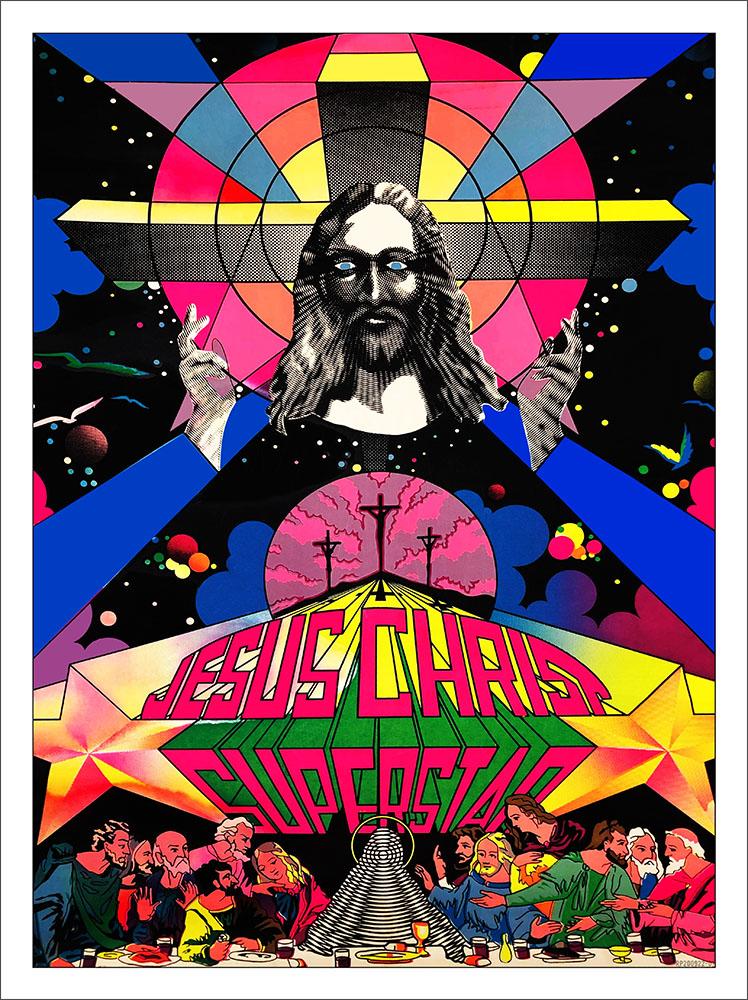
more...
Beautiful spiral galaxy Messier 74 (also known as NGC 628) lies some 32 million light-years away toward the constellation Pisces. An island universe of about 100 billion stars with two prominent spiral arms, M74 has long been admired by astronomers as a perfect example of a grand-design spiral galaxy. M74’s central region is brought into a stunning, sharp focus in this recently processed image using publicly available data from the James Webb Space Telescope. The colorized combination of image data sets is from two of Webb’s instruments NIRcam and MIRI, operating at near- and mid-infrared wavelengths. It reveals cooler stars and dusty structures in the grand-design spiral galaxy only hinted at in previous space-based views.
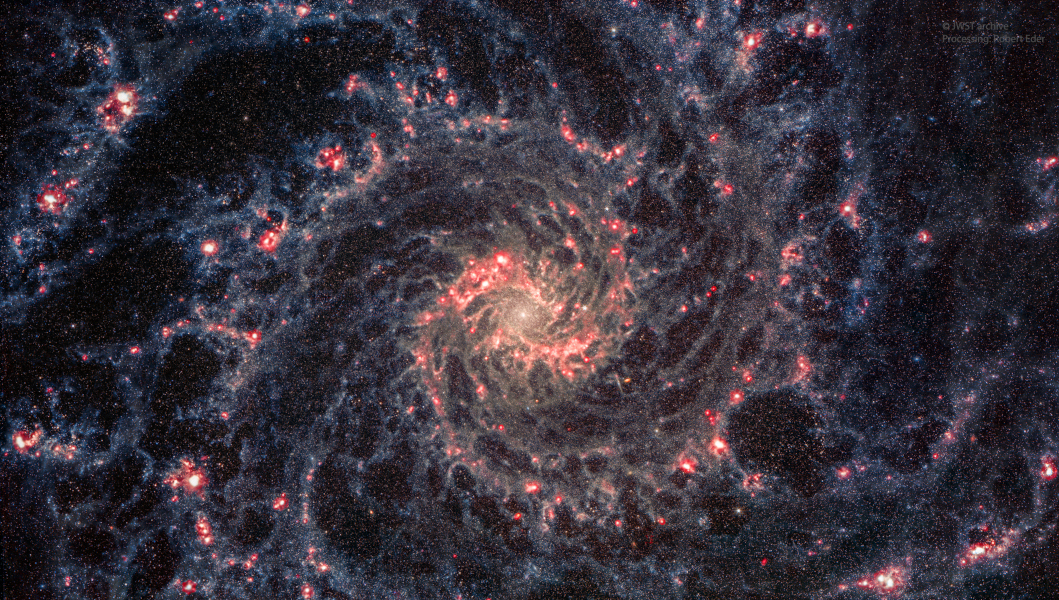
Don Patterson (July 22, 1936 – February 10, 1988) was an American jazz organist.
Patterson played piano from childhood and was heavily influenced by Erroll Garner in his youth. In 1956, he switched to organ after hearing Jimmy Smith play the instrument.
In the early-1960s, he began playing regularly with Sonny Stitt, and he began releasing material as a leader on Prestige Records from 1964 (with Pat Martino and Billy James as sidemen). His most commercially successful album was 1964’s Holiday Soul, which reached #85 on the Billboard 200 in 1967.
Patterson’s troubles with drug addiction hobbled his career in the 1970s, during which he occasionally recorded for Muse Records and lived in Gary, Indiana. In the 1980s, he moved to Philadelphia and made a small comeback, but his health deteriorated over the course of the decade, and he died there in 1988.
more...George Edward Clinton (born July 22, 1941) is an American musician, singer, songwriter, bandleader, and record producer. His Parliament-Funkadelic collective (which primarily recorded under the distinct band names Parliament and Funkadelic) developed an influential and eclectic form of funk music during the 1970s that drew on science fiction, outlandish fashion, psychedelia, and surreal humor. He launched his solo career with the 1982 album Computer Games and would go on to influence 1990s hip hop and G-funk.
Clinton is regarded, along with James Brown and Sly Stone, as one of the foremost innovators of funk music. He was inducted into the Rock and Roll Hall of Fame in 1997, alongside 15 other members of Parliament-Funkadelic. In 2019, he and Parliament-Funkadelic were given Grammy Lifetime Achievement Awards.
George Edward Clinton was born in Kannapolis, North Carolina, grew up in Plainfield, New Jersey, and currently[when?] resides in Tallahassee, Florida. During his teen years, Clinton formed a doo-wop group inspired by Frankie Lymon & the Teenagers called The Parliaments, while straightening hair at a barber saloon in Plainfield, New Jersey.
The West End of Plainfield was once home to a barbershop on 216 Plainfield Avenue known as “Silk Palace”. Owned in part by Clinton, it was staffed by various members of Parliament-Funkadelic, and known as the “hangout for all the local singers and musicians” in Plainfield’s 1950s and 1960s doo-wop, soul, rock, and proto-funk music scene.
more...Albert Laurence Di Meola (born July 22, 1954) is an American guitarist. Known for his works in jazz fusion and world music, he began his career as a guitarist of the group Return to Forever in 1974. Between the 1970s and 1980s, albums such as Elegant Gypsy and Friday Night in San Franciscoearned him both critical and commercial success.
Born in Jersey City, New Jersey, United States, into an Italian family with roots in Cerreto Sannita, a small town northeast of Benevento, Di Meola grew up in Bergenfield, where he attended Bergenfield High School. He has been a resident of Old Tappan, New Jersey.
When he was eight years old, he was inspired by Elvis Presley and the Ventures to start playing guitar. His teacher directed him toward jazz standards. He cites as influences jazz guitarists George Benson and Kenny Burrell and bluegrass and country guitarists Clarence White and Doc Watson.
He attended Berklee College of Music in 1971. At nineteen, he was hired by Chick Corea to replace Bill Connors in the pioneering jazz fusion band Return to Forever with Stanley Clarke and Lenny White. He recorded three albums with Return to Forever, helping the quartet earn its greatest commercial success as all three albums cracked the Top 40 on the U.S. Billboard pop albums chart.
more...Herman “Junior” Cook (July 22, 1934 – February 3, 1992) was an American hard bop tenor saxophone player.
Cook was born in Pensacola, Florida. After playing with Dizzy Gillespie in 1958, Cook was a member of the Horace Silver Quintet (1958–1964); when Silver left the group in the hands of Blue Mitchell Cook stayed in the quintet for five more years (1964–1969).[1] Later associations included Freddie Hubbard, Elvin Jones, George Coleman, Louis Hayes (1975–1976), Bill Hardman (1979–1989), and the McCoy Tyner big band.
In addition to many appearances as a sideman, Junior Cook recorded as a leader for Jazzland (1961), Catalyst (1977), Muse, and SteepleChase.
He also taught at Berklee School of Music for a year during the 1970s.
In the early 1990s, Cook was playing with Clifford Jordan, and also leading his own group. He died in February 1992 in his apartment in New York City, aged 57.
more...More Posts
- Daily Roots with Bongo Herman & Bingy Bunny
- The Cosmos with NGC 2237
- Jaco Pastorius Day
- Bette Midler Day
- Sandy Nelson Day
- Ike Issacs Day
- World Music with Tamazight
- Daily Roots with Bunny Brown
- Shabbat for the Soul service Mt Zion Temple
- Rhythm Roots Workshop Solo Performance
- The Cosmos with NGC 7552
- Jack Sheldon Day
- Brownie McGhee Day
- Robert Nighthawk Day
- World Music with Paco de Lucia
- Daily Roots with Pat Kelly
- The Cosmos with Corona Australis
- Billy Hart Day
- John Mayall Day
- Billy Strayhorn Day